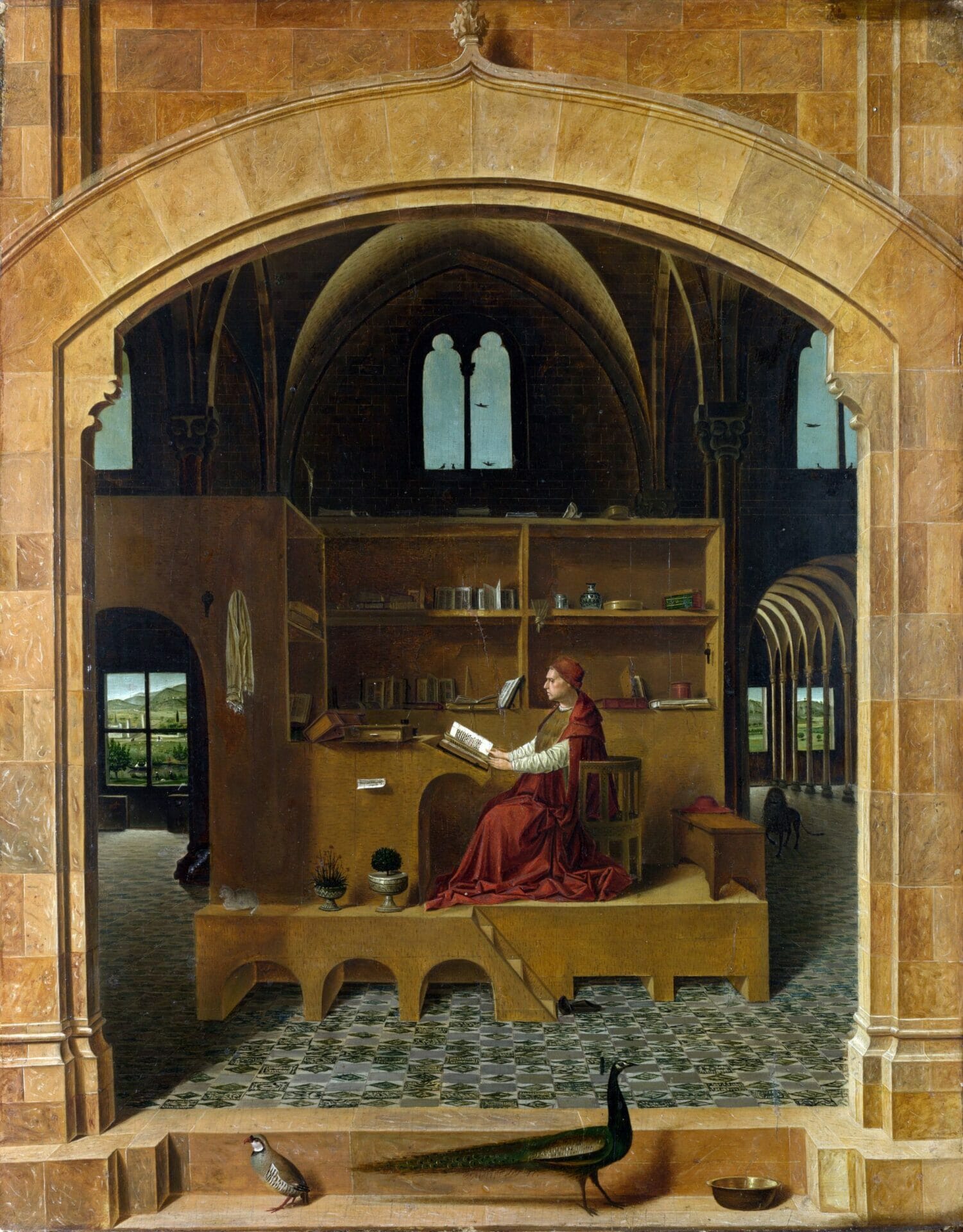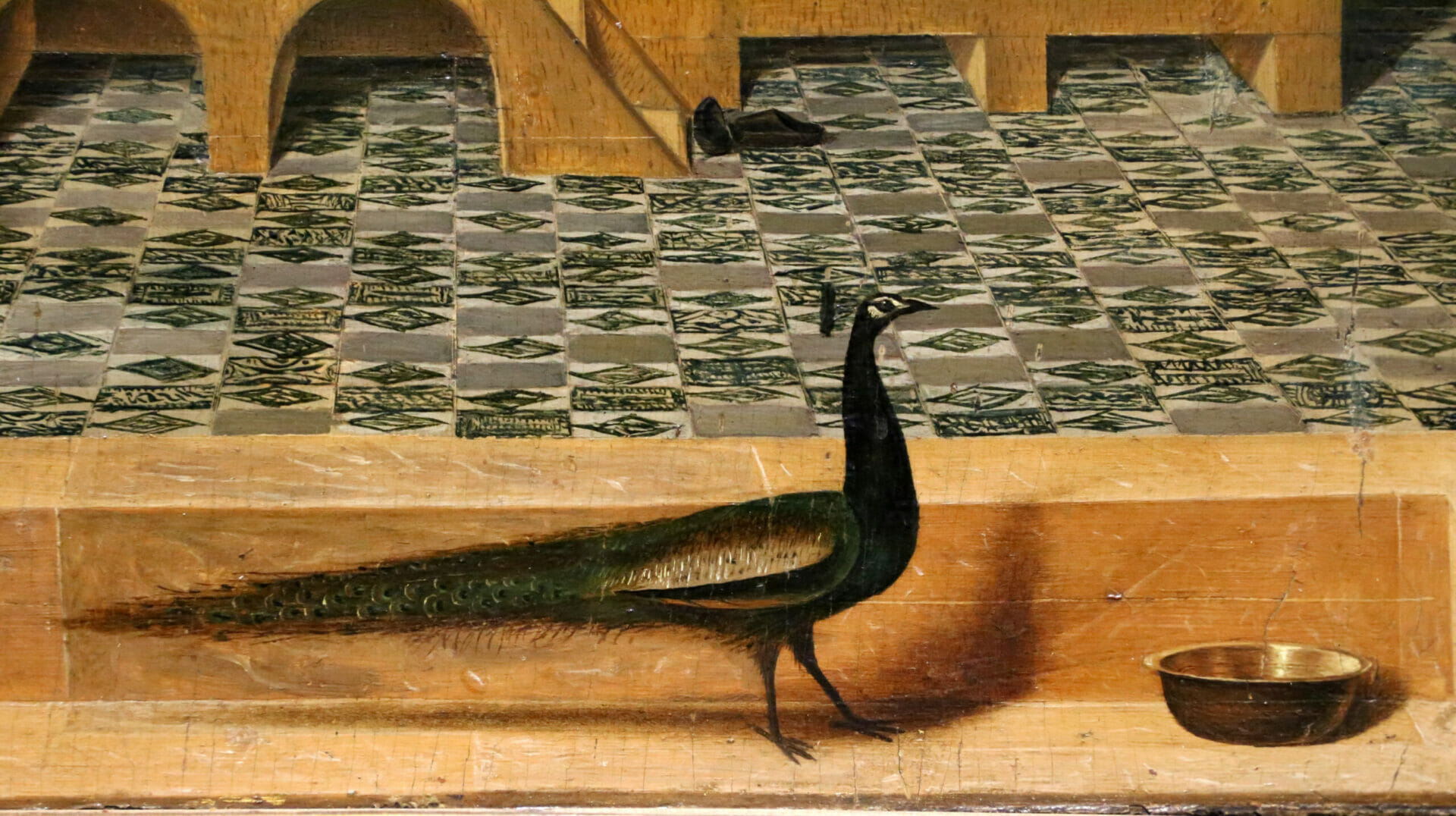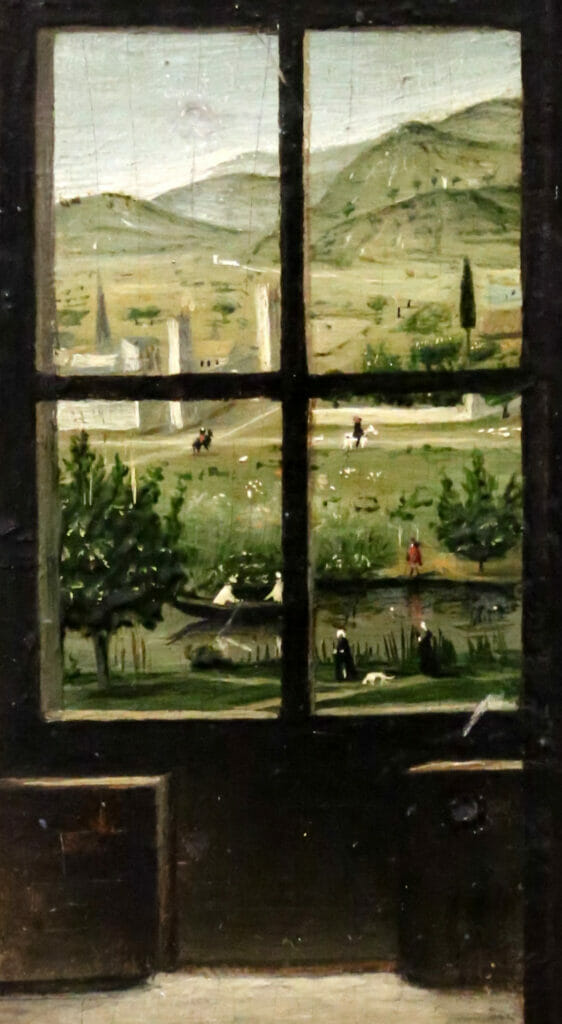
Saint Jerome in his study | A new humanist iconography
Artist
Year
Country
Format
Material/Technique
San Girolamo (Saint Jerome) is the Doctor of the Church to whom we owe the first Latin translation of the entire Bible (Vulgate). Paintings usually show him in the act of writing, in front of a desk surrounded by books. Scholars have often noticed in this table that Saint Jerome does not have any typical element in representing a Saint. The traditional halo is the first visible lack.
A true intellectual
In comparison with the same subject in his master Colantonio’s painting, Antonello da Messina clearly wanted to offer a different representation. This Saint Jerome looks to us as a scholar of his time, contributing to a new, lay iconography for humanist intellectuals. Another proof of this evolving sensibility is the contemporary production of portraits of the Lords of the time, as in the case of Federico da Montefeltro by Pedro Berruguete, who captures him immersed in the reading of a volume, as a true intellectual.

Traditional and new iconography
But looking carefully at this painting, it is possible to recognize the saint and even confirm Saint Jerome’s identity: behind his figure, on the bench, appears the red cardinal’s hat, while on the right, in the shadows, a lion is approaching. The lion has always accompanied the Saint’s representations because Jerome saved a wounded lion during his hermitage in the desert, and from that moment, the animal became his faithful companion.
Another clue that connects to the traditional iconography is the crucifix: Antonello used all his skills to paint it at the brush’s tip in a perfect profile perspective, visible on the library’s top left.
The setting
The scene’s setting is also curious: the architectural interior looks in all respects like a church with vaults, capitals, and mullioned windows. But there is a wooden structure dedicated to the study in the center, with shelves full of books, a desk, and seating. These elements may underline how this Saint, inside the Catholic Church, dedicated himself to prayer through reason, the main virtue of the humanist era.
The two birds in the painting
Finally, to conclude the iconography on the threshold of the portal that introduces us to the scene, we see two birds: the partridge and the peacock.
Since the early Christians, the peacock has represented Christ because it personifies the virtues of immortality, kingship, and eternal glory. The partridge instead is an animal that connects to the specific iconography of Saint Jerome. In fact, in one of his writings, the Doctor of the Church uses the partridge and its habits of hatching other birds’ eggs, as an allegory for all the fools who accumulate riches unjustly and vainly.


Homesick
The oeuvre also contains a detail related to its author: Antonello was an artist in love with his hometown in Sicily’s Northeast corner, Messina. He gave up his brilliant career in the Veneto region and returned to Sicily.
His city’s constant nostalgia is present in many works, which often show the Strait and Messina harbor in the background. Within this work, scholars have identified a panorama of Monte Santo di Camaro, a Messina’s stream and neighborhood. This is the glimpse that one can see beyond the left window, in the table’s background, where the hills’ gentle curves still overlap Messina’s current landscape.


Tag
Buy a ☕ for Hypercritic







